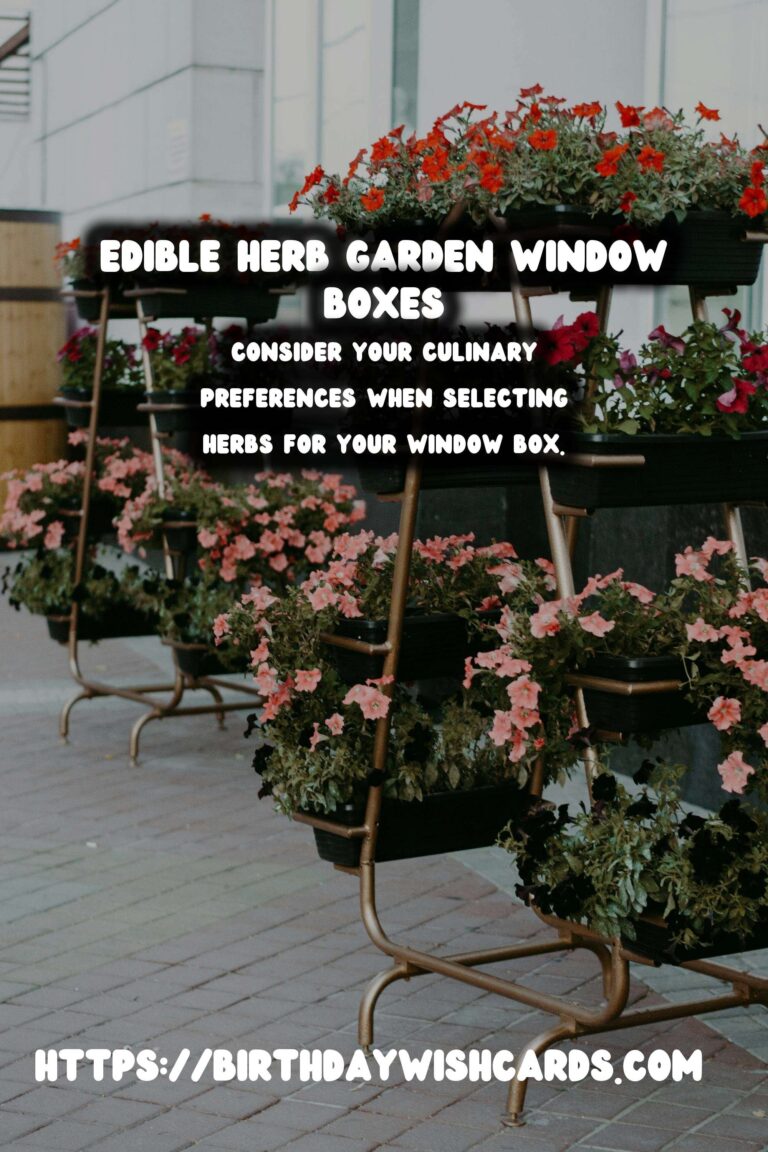
Spring is the perfect time to refresh your home with vibrant greenery, and what better way to do so than by creating a beautiful and functional edible herb garden in your window boxes? Not only do herb gardens add aesthetic appeal, but they also provide fresh ingredients for your culinary creations. In this comprehensive guide, we will explore how to design, plant, and maintain a flourishing herb garden in your window boxes.
Choosing the Right Herbs for Your Window Box
The first step in creating an edible herb garden is selecting the right herbs. Consider your culinary preferences, the climate of your region, and the sunlight your window box receives daily. Some popular herbs for window boxes include basil, cilantro, parsley, thyme, rosemary, and chives.
Preparing Your Window Box
Before planting, ensure your window box has proper drainage. Excess water can lead to root rot and other plant health issues. Line the bottom of your window box with a layer of pebbles or gravel, then fill it with high-quality potting soil rich in organic matter.
Planting Your Herbs
Once your window box is prepared, it’s time to plant your herbs. Space them appropriately to allow for growth and adequate air circulation. Gently remove the herbs from their nursery pots and plant them at the same depth as they were previously growing.
Caring for Your Edible Herb Garden
Herbs require regular watering, especially in sunny locations. Water them early in the morning or late in the afternoon to prevent evaporation. Additionally, fertilize your herbs every few weeks with a balanced, water-soluble fertilizer to promote healthy growth.
Harvesting Your Herbs
Regularly harvesting your herbs encourages new growth and prevents them from becoming leggy. Use sharp scissors or pruning shears to snip off the leaves and stems as needed for cooking.
Common Issues and Solutions
Be on the lookout for common issues such as pests and diseases. Aphids, spider mites, and whiteflies can be controlled with insecticidal soap or neem oil. Fungal diseases can often be prevented with proper air circulation and by avoiding overhead watering.
Benefits of an Edible Herb Garden
Having an edible herb garden provides numerous benefits. Fresh herbs enhance the flavor of your meals, and growing them yourself ensures they are pesticide-free. Additionally, the aroma and greenery of herbs can improve mood and air quality in your home.
Creating a spring window box with an edible herb garden is a rewarding project that brings beauty and utility to your space. Follow these steps to enjoy fresh herbs right at your fingertips all season long.
Spring is the perfect time to refresh your home with vibrant greenery. Consider your culinary preferences when selecting herbs for your window box. Ensure your window box has proper drainage before planting. Regularly harvesting your herbs encourages new growth. An edible herb garden provides numerous benefits, including fresh flavors and improved air quality. 
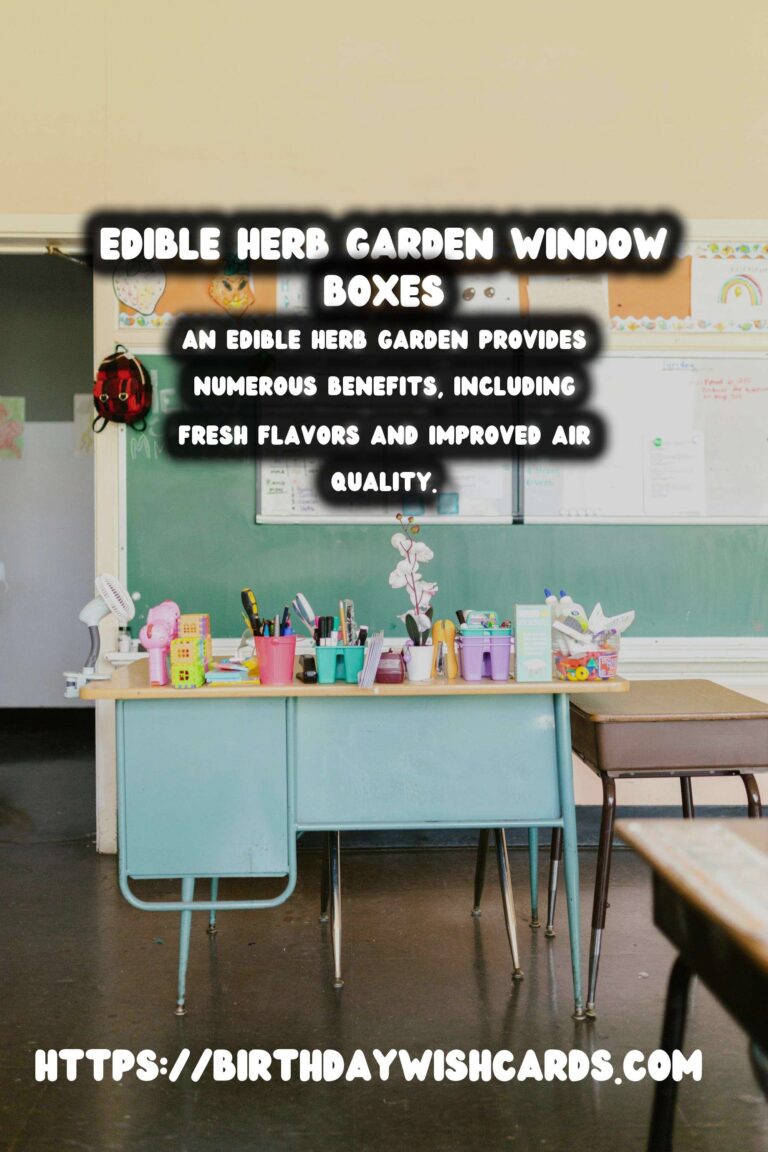
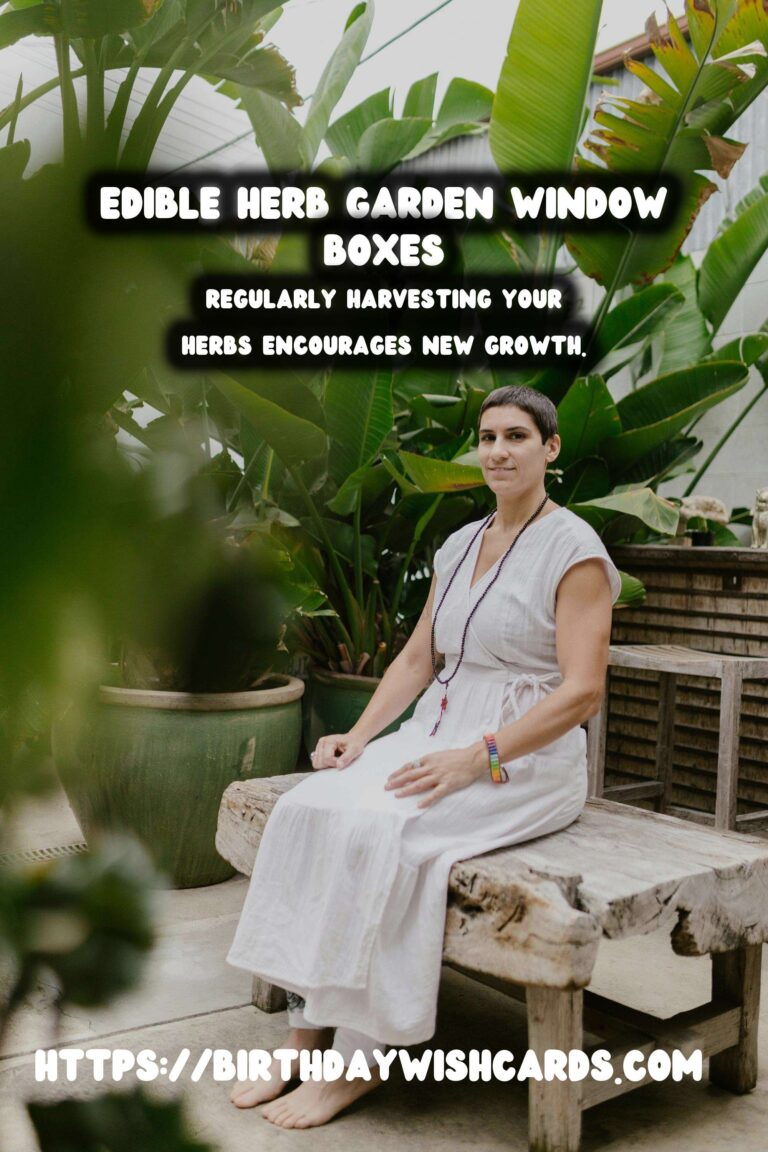
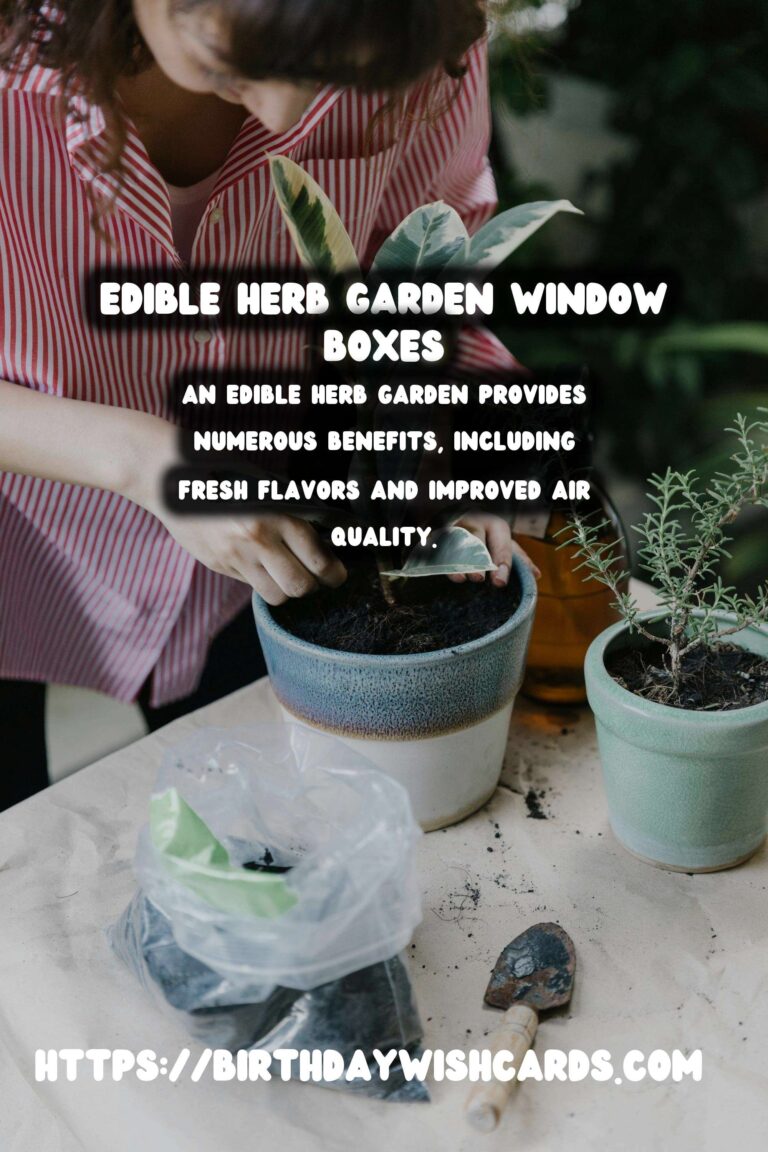
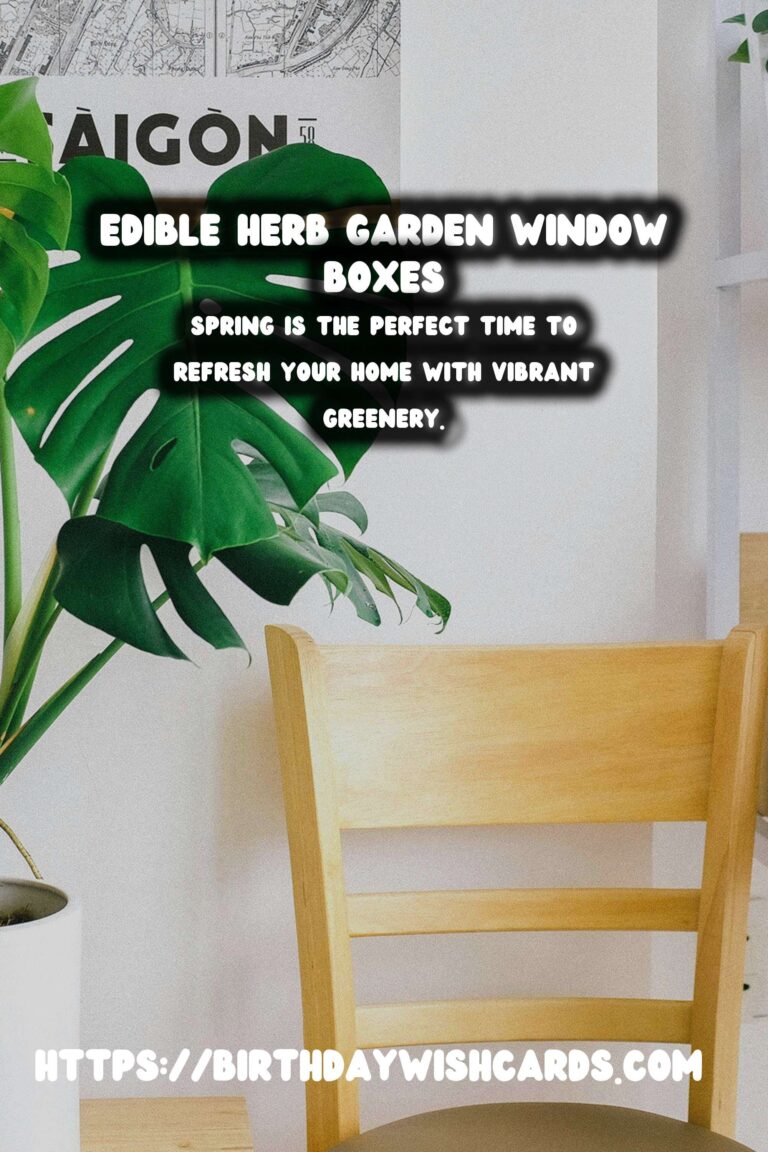
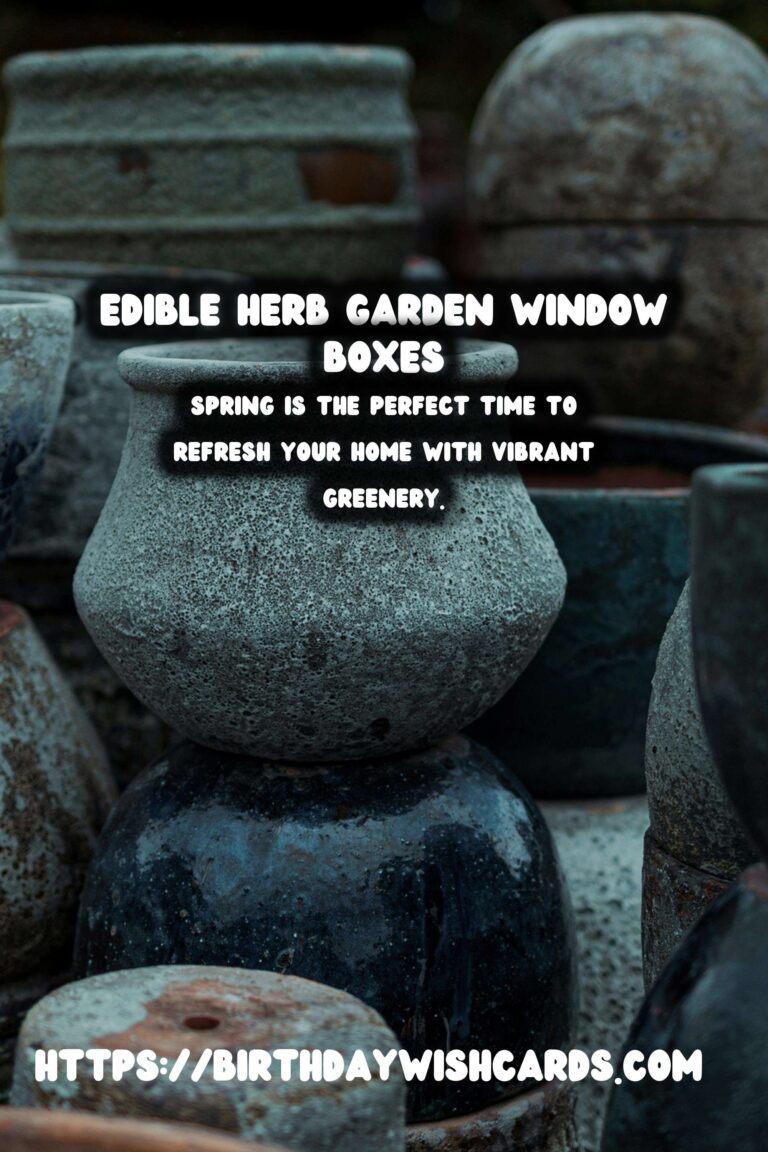
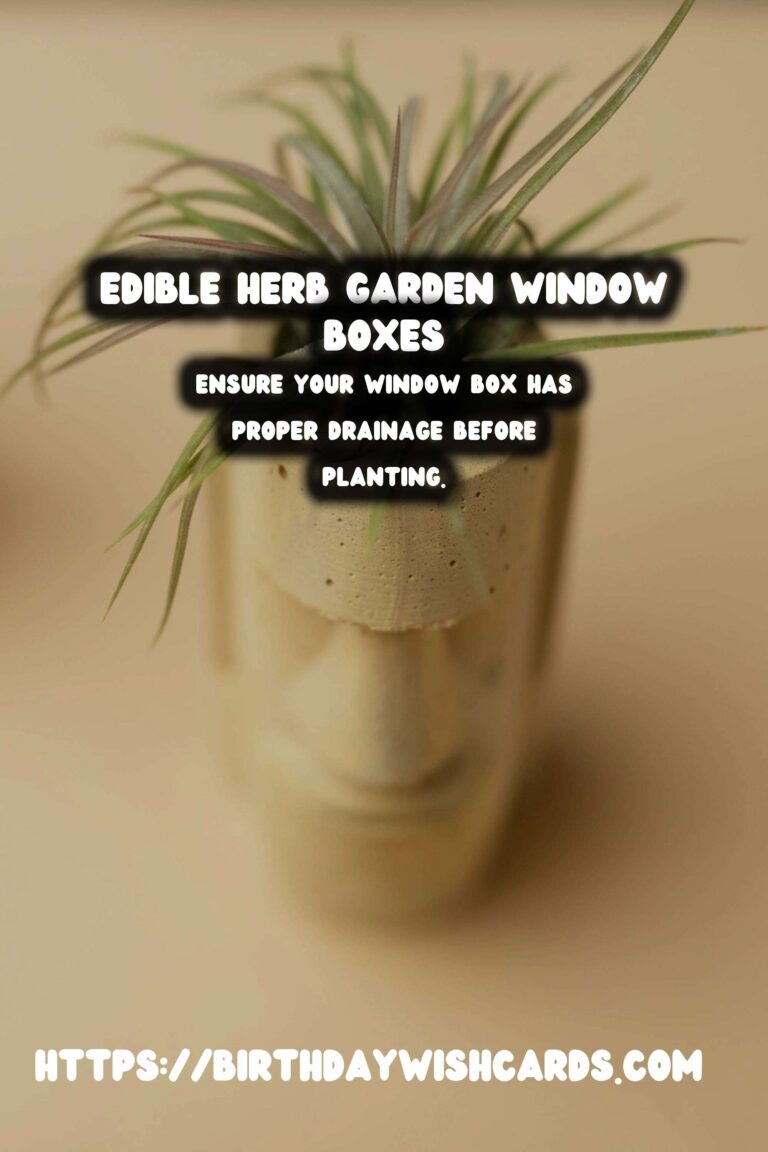
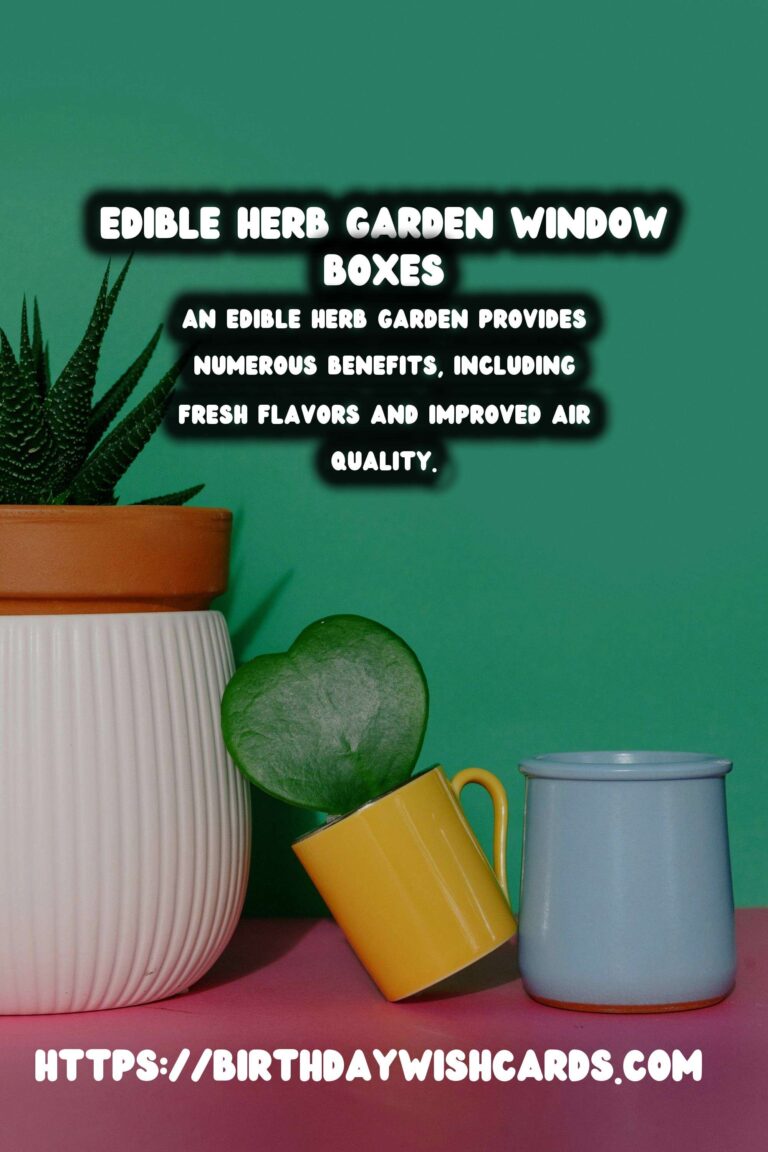
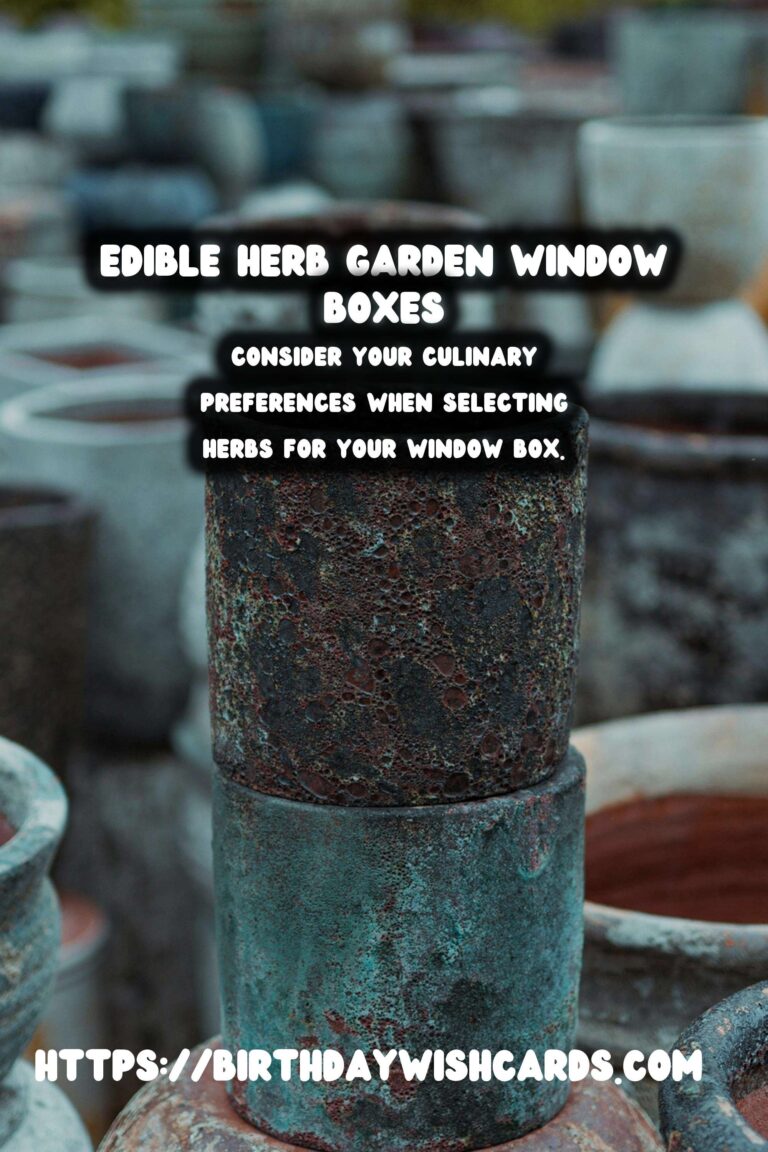
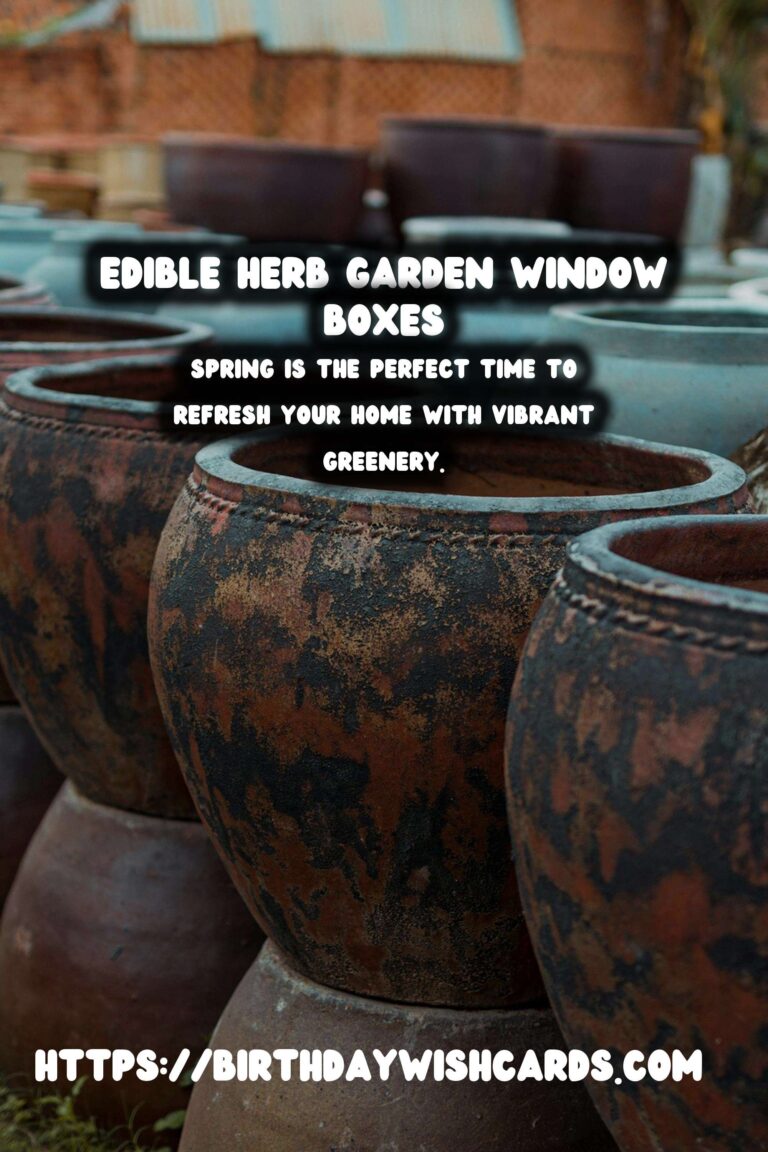
#HerbGarden #SpringGardening #WindowBox #EdibleGarden #GardeningTips




